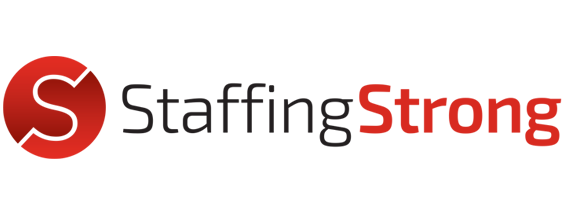
28 Jul Gender Pronouns, Civil Rights, and the Hiring Process
When it comes to bringing on new talent, it’s critical to remember that while the goal of diversity and inclusion is key in building an accepting workplace where everyone can do their best work, using preferred employee and applicant pronouns is more than a common courtesy. It’s their civil right. Gender pronouns aren’t just a huge part of how we identify and communicate with team members, but also how we refer to others in the workplace.
In some states, including California and New York City, employers must refer to workers by their selected pronouns under employment law. In fact, referring to individuals by some other pronoun could be considered harassment with legal consequences.
As employers interviewing hundreds or even thousands of candidates, it’s easy to assume a candidate’s gender and use the appropriate corresponding pronouns like she or he. But it isn’t that simple. With civil rights for the LBTQ+ community in clear focus and a priority for a huge portion of job applicants and employers, it’s important make gender pronouns part of your approach—starting when new candidates apply.
Asking someone their pronouns can blur the lines, feeling ultra-personal or uncomfortable at the time, specifically when it comes to non-binary (non-gender-conforming) individuals. In comparison, being a non-binary applicant first getting to know an organization it can be extremely intimidating having to clarify or correct your preferred pronouns for recruiters, team members, or especially, a hiring manager.
About Gender Pronouns
Maybe “gender pronouns” is a new addition to your vocabulary, but they aren’t new. Think about adding he said or she said when you’re telling a story or recapping a conversation. Or, when we’re referring to someone in a more high-level or abstract way (if we don’t know their gender or it doesn’t apply) maybe it’s they mentioned. As we’re on the heels of the annual Pride month, honoring LGBTQ+ inclusion, the topic of gender pronouns is front and center.
Common gender pronouns include:
- Male: He / Him / His.
- Female: She / Her / Hers.
- Neutral and/or plural: They / Them / Theirs.
This guide includes expanded pronouns. Here are a few best practices for incorporating pronouns into your company culture and hiring and onboarding processes:
1. Normalize using pronouns.
You may have noticed a recent update to LinkedIn profiles in the platform’s five major user countries. The online community for professional networking has added pronouns as a default option in profile headers due to growing user demand for the feature. Gender identity is a top-of-mind subject for most millennials and zennials who make up most of the modern workforce, in addition to a good portion of Gen Xers. It didn’t slip past the leaders at LinkedIn that gobs of users were adding pronouns in their profile names or headlines in the spirit of allyship.
In a report by the networking platform, LinkedIn found that 70% of all job seekers think recruiters and hiring managers alike should prioritize confirming preferred gender pronouns. An overwhelming 72% of hiring managers agree with the mindset that having clarity on a candidate’s gender pronouns is beneficial and helps others be “respectful of their identity.”
Adding your pronouns to your LinkedIn profile is an easy way to let connections, colleagues, and applicants know that your workplace respects diversity and empowers inclusion. In addition, incorporating your pronouns is a small act of allyship to use some of your own professional or social capital to make others comfortable opening up about theirs. To add your pronouns on LinkedIn, go to Edit my profile and select from the Pronouns dropdown or use the custom field to edit as needed before clicking Save.
Other ways to normalize employees putting their pronouns front and center is by designating an official space for them in company email signatures, messenger statuses, or on employee profile pages on your company intranet. These small steps can make a giant impact.
2. Add it to your application process.
Gaining clarity around gender pronouns doesn’t have to be awkward for anyone. Make it easy by having candidates confirm their name and gender pronoun preferences as part of your online application. Once you have confirmed the applicant’s preferred gender pronouns, ensure that hiring managers and others interviewing or screening the candidate are made aware of their preference.
If the candidate does not wish to disclose gender pronouns or identity on their application, it’s best to avoid pronouns altogether and have your human resources department clarify upon hire so the correct pronouns are included in their offer letter and used moving forward.
3. Include it in your onboarding.
More organizations are eliminating he and she from employee handbooks and replacing them with gender-neutral pronouns instead to help nonbinary individuals not identifying as male or female feed included. These companies are also ditching gender-specific pronouns across internal materials and customer-facing marketing, using “their” or “them” instead.
According to the Society of HR Management Professionals (SHRM), a growing number of Millennials identify as nonbinary (transgender, gender fluid, between gender or third gender). The publication also cautions against presuming sexual orientation based on someone’s gender identity—both are uniquely distinct concepts.
Eliminating gender pronouns from Human Resources documents, like handbooks, policies, and other internal and external marketing helps to ensure everyone feels valued, respected, and included.
Promote a more inclusive hiring process.
First impressions are important and so is promoting an inclusive workplace free from harassment or discrimination. Consulting the experts can help.
We can help.
At Staffing Strong, we understand how to help you attract and retain the most competitive talent while empowering respect and diversity every step of the way. Let’s talk about your hiring goals.
Meet the Author
Evelyn Vega is the Founder and President at Staffing Strong and the Past President of the Phoenix American Marketing Association. Since 1999, she’s made her career about supporting her clients in building meaningful careers and partnering with businesses in finding quality hires. In her free time, Evelyn sits on various advisory boards and enjoys practicing on her drum set!

Sorry, the comment form is closed at this time.